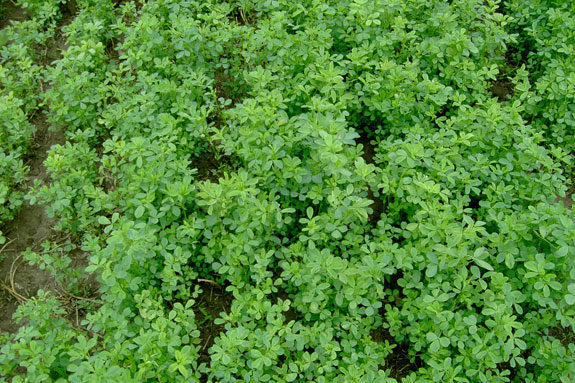Consider the fields you plan to rotate out of alfalfa and into corn for next year. We know that the first rotational year out of hay can grow some very good corn. Cost of production is always lower because of the N credit attributed to rotated alfalfa.
With that in mind – make sure to spread fall and winter livestock manure where the nutrients can best be used. The most efficient place to apply manure for N purposes will usually be fields where corn follows corn.
Most fields where you plan to plant first-year corn, rotated from alfalfa will need, at the most, a reduced rate of manure. Consider what your “reduced rate” of manure needs to be as you compare corn N need on your farm vs. the amount of N expected from rotated hay fields.
You may likely find that it is a better use of manure nutrients to delegate manure away from alfalfa fields that are being rotated to corn.
Nitrogen that is contained in alfalfa plant tissue is released as plant stems, leaves and roots go through the decomposition process. The amount of N credited from this process is based on:
Soil type – medium-textured soils retain more N vs. the leaching potential that exists with sandy soils. Sandy soils get less of an N credit.
Stand density – more plants equate to more decomposable material to release N. Very thin stands get less of an N credit.
Regrowth in late October – a late harvest with minimal plant regrowth time before winter contributes less stem and leaf material for decomposition. Late-harvested fields with limited regrowth get less of an N credit.

The UW-Extension chart shows N credits for rotated alfalfa based on soil type, stand density and regrowth (plant height) in late October.
Values shown here are applicable regardless of time of killing (spring or fall), method of killing (herbicide, tillage or winterkill) and tillage (no-till, minimum till or complete till).
Second-year credit: In the second cropping year following fair and good stands on medium-textured and fine-textured soil, you can take a 50-lb N per acre credit. FG
—University of Wisconsin Discovery Farms Program
PHOTO
TOP: Alfalfa regrowth. Photo and figure courtesy of University of Wisconsin Discovery Farms Program.










